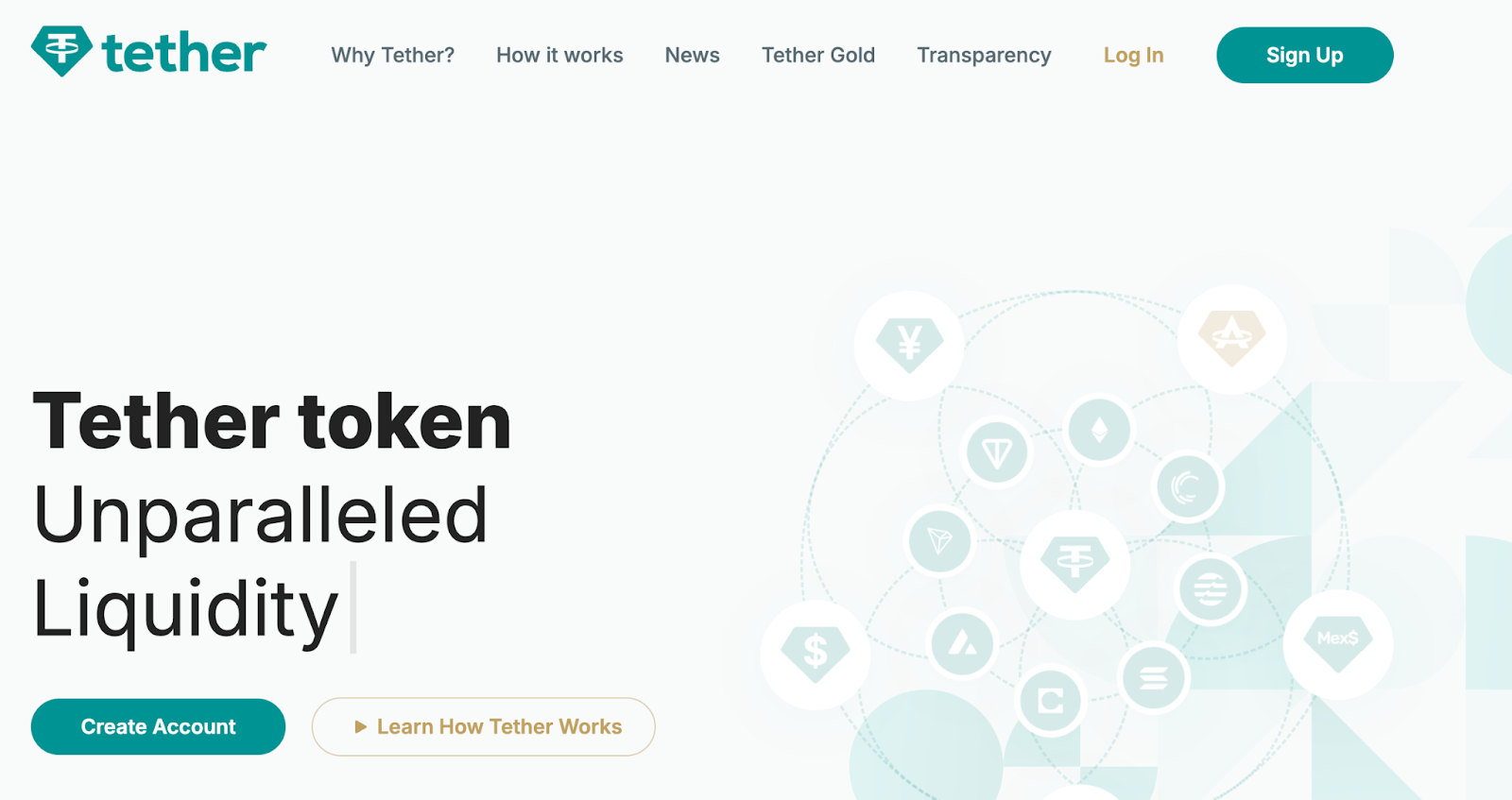What Is USDT? A Beginner’s Guide to Understanding the Stablecoin
What Is USDT?

Image source: https://tether.to/en/
Tether designed USDT to maintain a value of 1 USDT = 1 USD, providing a reliable benchmark of stability for the cryptocurrency market. USDT, officially known as Tether USD, is a stablecoin pegged to the US dollar. Unlike highly volatile digital assets such as Bitcoin and Ethereum, USDT offers relative price stability and is widely used for trading and payments.
The Origins and Development of USDT
In 2014, Tether introduced USDT to bridge the gap between fiat currencies and cryptocurrencies. As demand grew, USDT expanded across multiple blockchain networks, including Ethereum (ERC-20), TRON (TRC-20), and Binance Chain (BEP-20). Today, USDT ranks as one of the most widely circulated stablecoins in the world, consistently posting some of the highest trading volumes in the crypto industry.
How USDT Works
USDT derives its value from US dollar reserves. Theoretically, each USDT held by users is backed by one US dollar. Tether conducts regular disclosures of its asset reserves to maintain credibility in the market. While questions have been raised about the transparency of these reserves, USDT remains the most liquid stablecoin available today.
USDT’s Role in the Crypto Market
USDT primarily provides traders with a stable store of value and a medium for exchange. During periods of high market volatility, many investors convert assets into USDT to manage risk. USDT also powers cross-border payments, decentralized finance (DeFi) protocols, and liquidity management on centralized exchanges.
Benefits and Risks of Using USDT
USDT’s greatest advantages are its price stability and exceptional liquidity—nearly all major exchanges and wallets support it. However, USDT is not without risks, including regulatory uncertainty, ongoing concerns regarding reserve transparency, and exposure to possible market disruptions. Users should conduct a rational risk assessment when considering the use of USDT.
Conclusion
USDT stands as one of the most vital stablecoins in the cryptocurrency sector. Its steady value and broad adoption make it a fundamental concept for newcomers. Equally, understanding its risks is essential for safely using and managing assets in the digital economy.
Related Articles

2025 BTC Price Prediction: BTC Trend Forecast Based on Technical and Macroeconomic Data

Flare Crypto Explained: What Is Flare Network and Why It Matters in 2025

Pi Coin Transaction Guide: How to Transfer to Gate.com

How to Use a Crypto Whale Tracker: Top Tool Recommendation for 2025 to Follow Whale Moves

What is N2: An AI-Driven Layer 2 Solution


